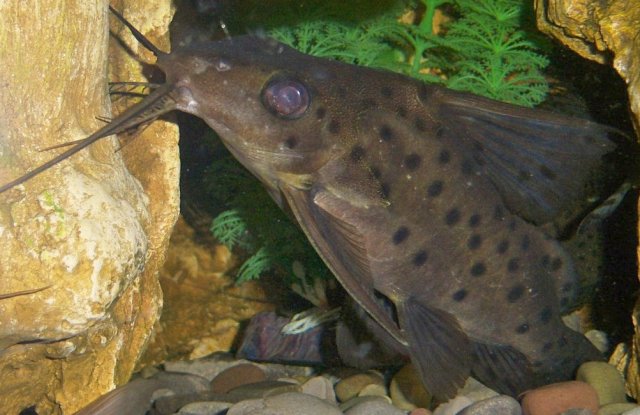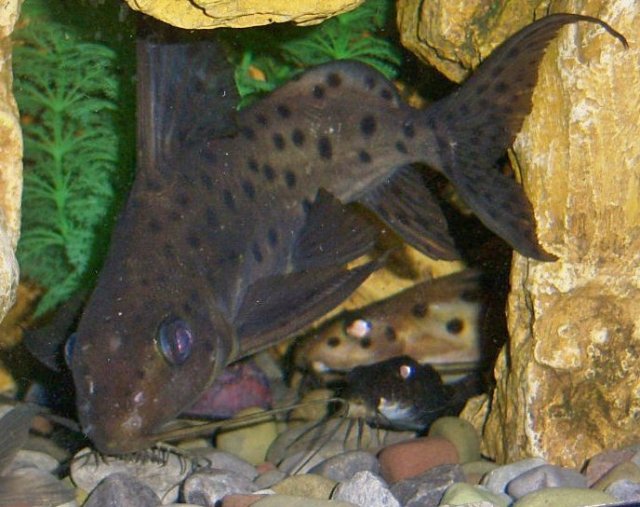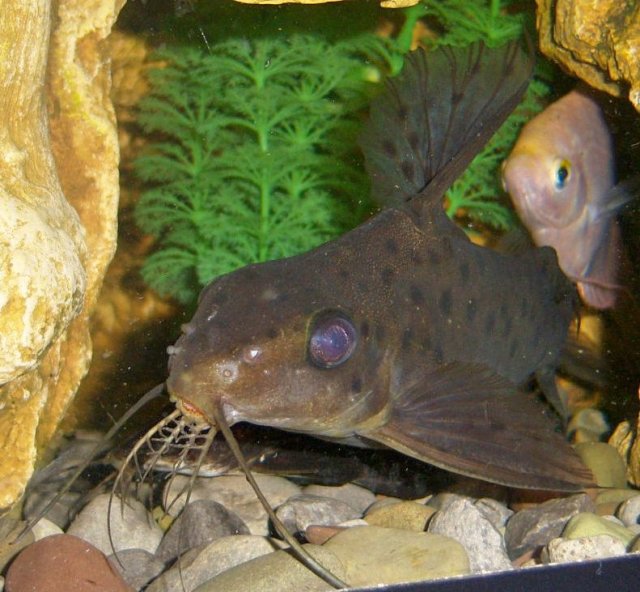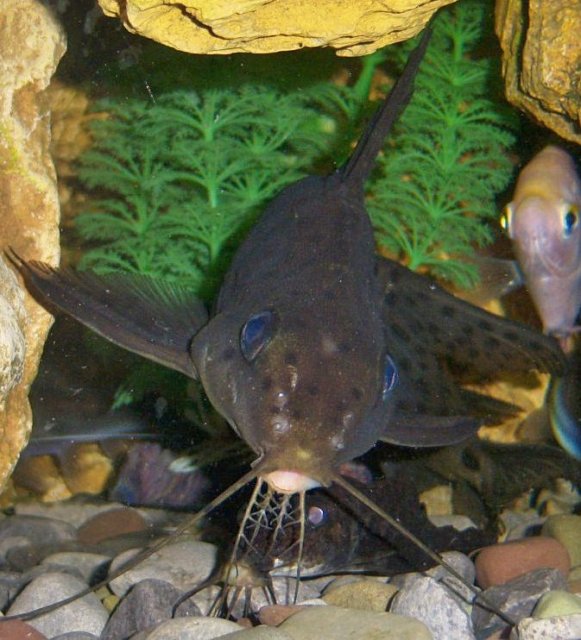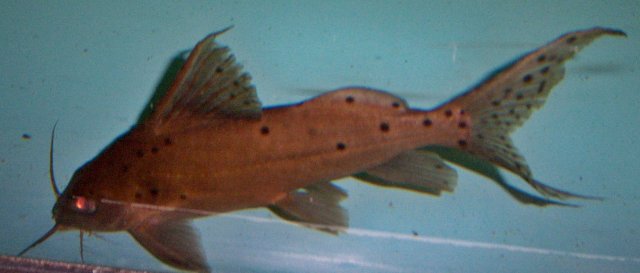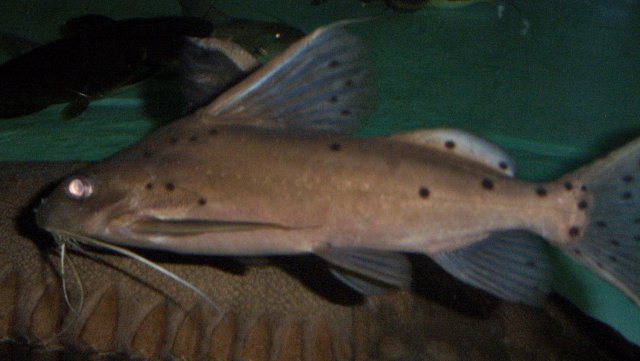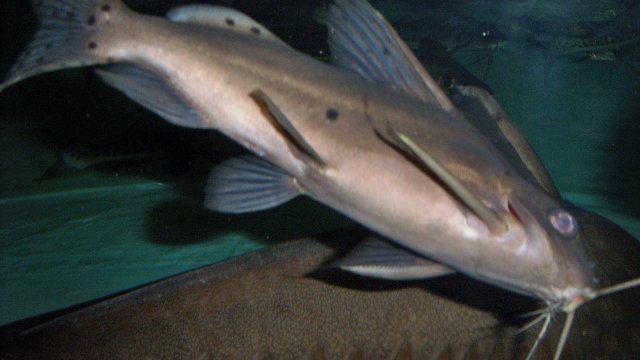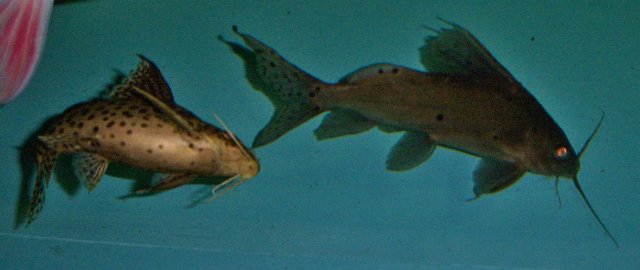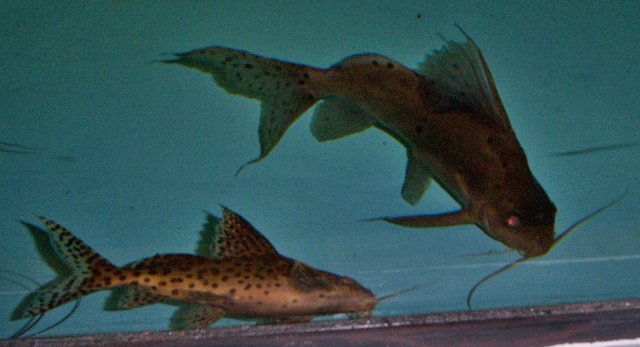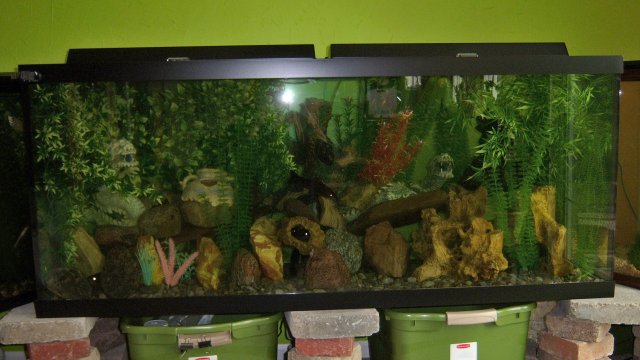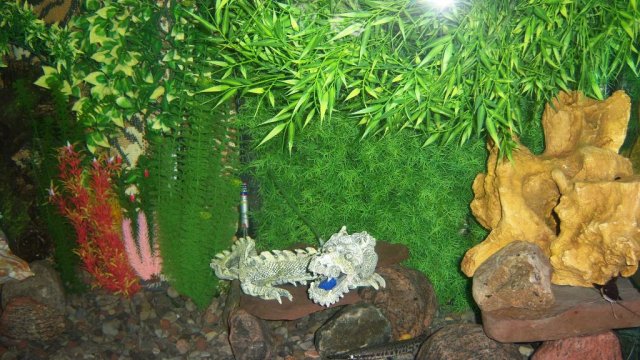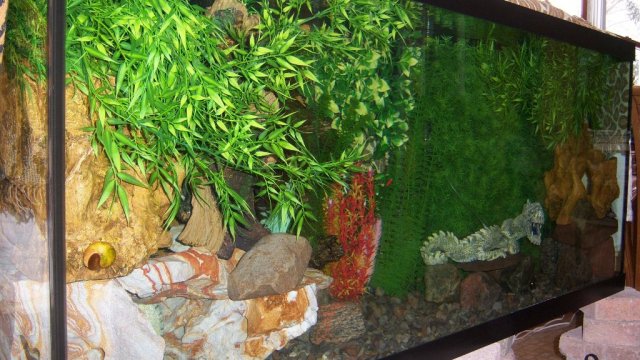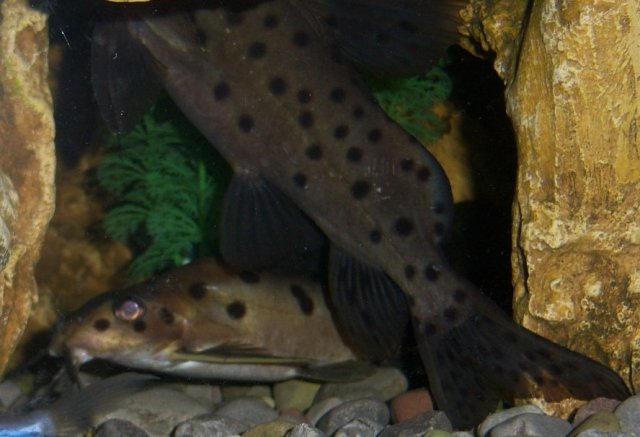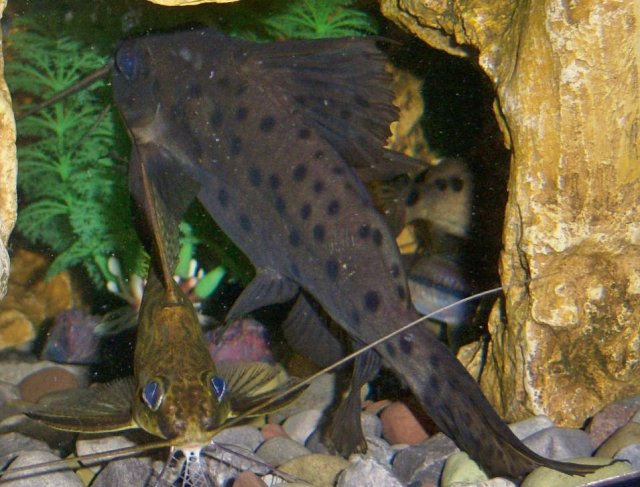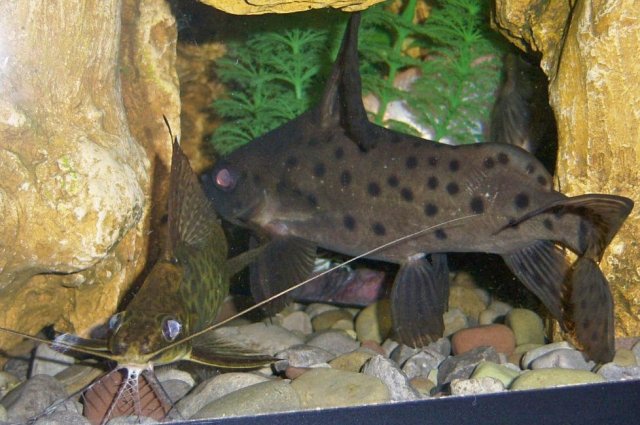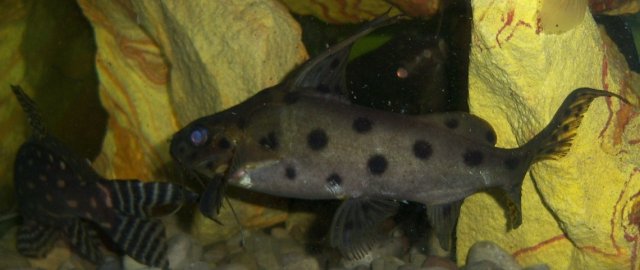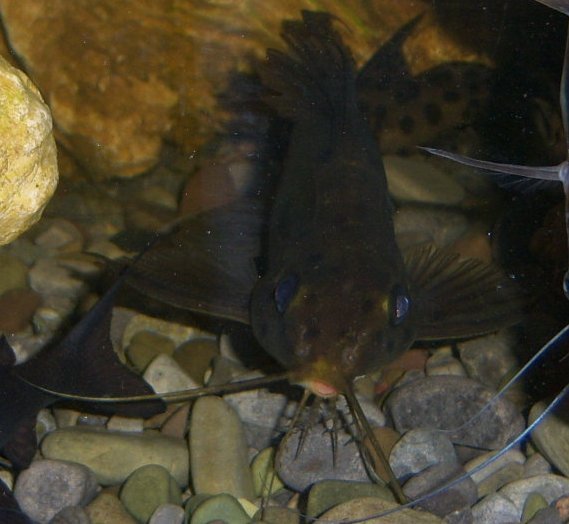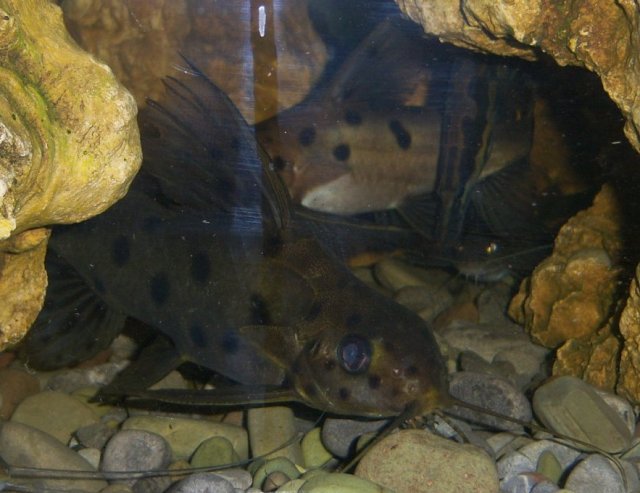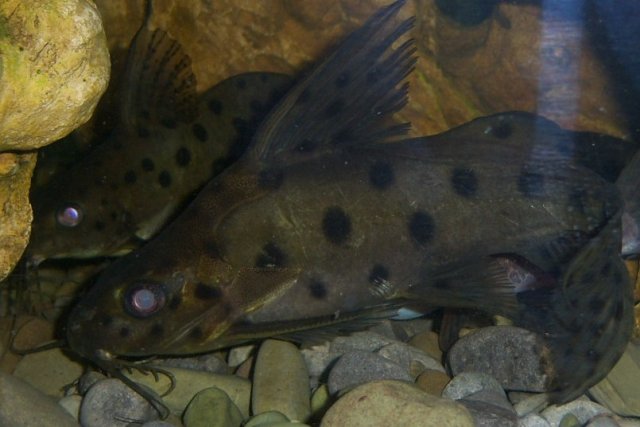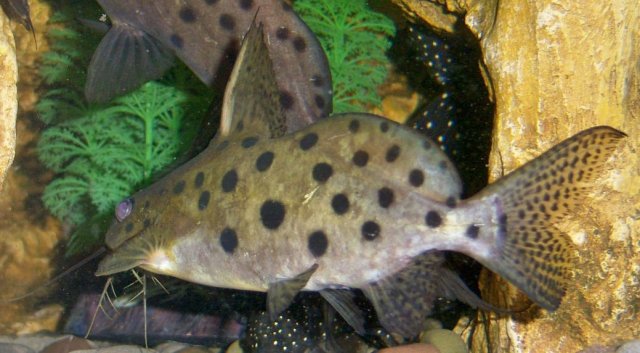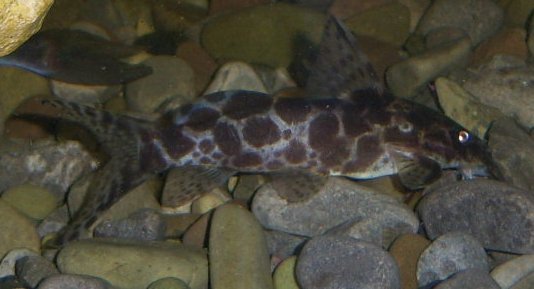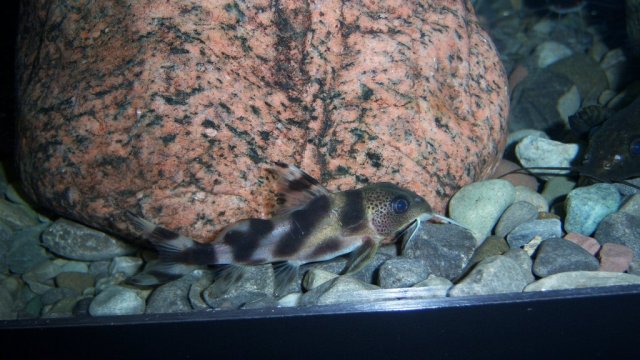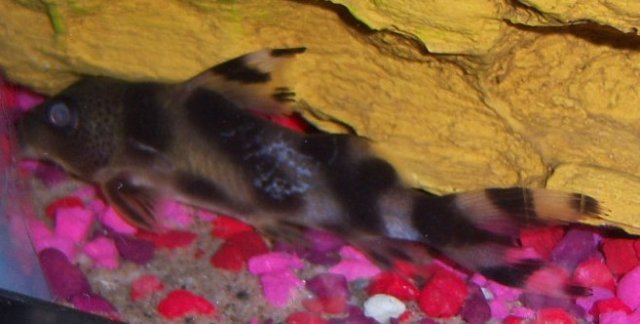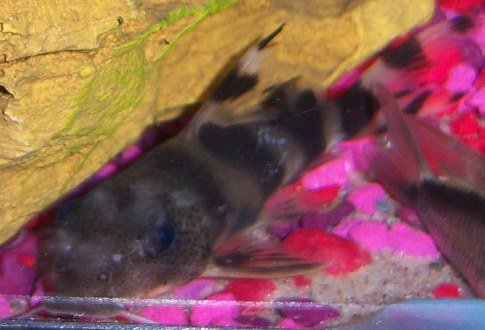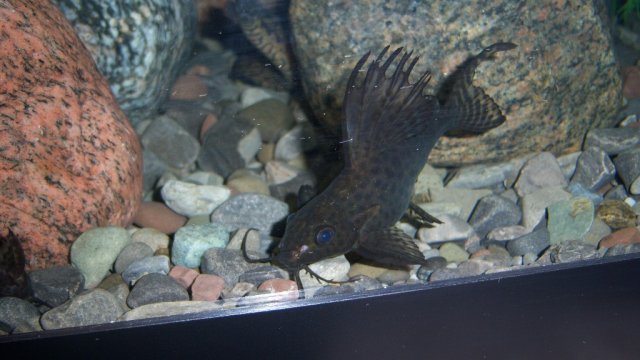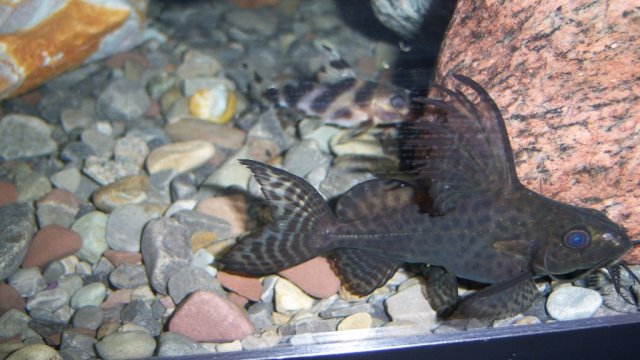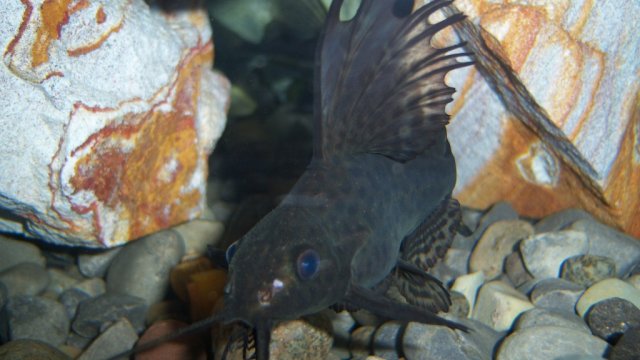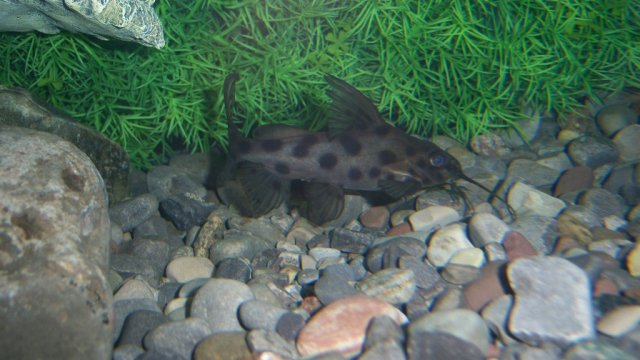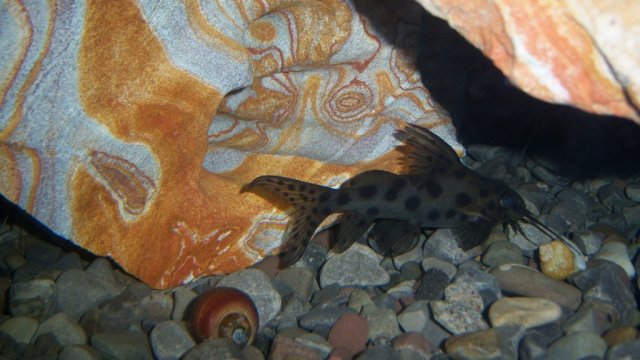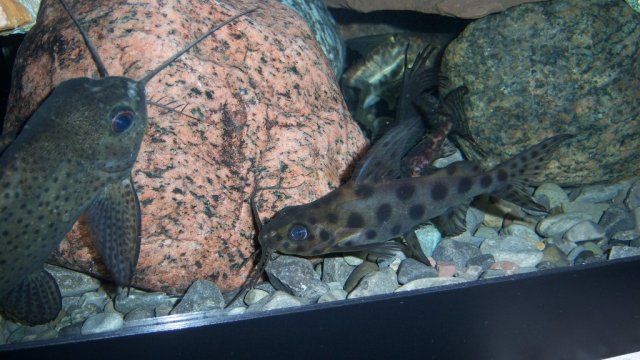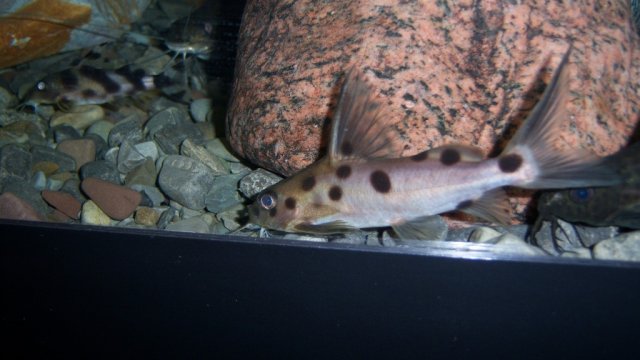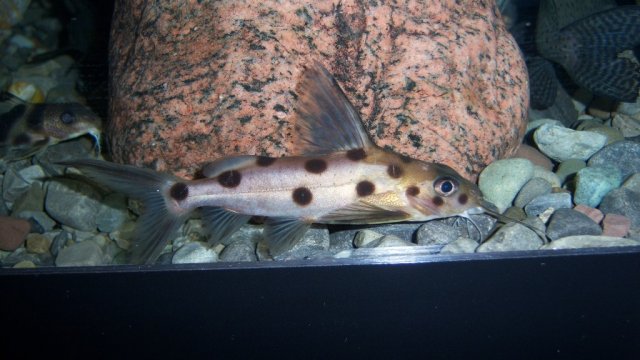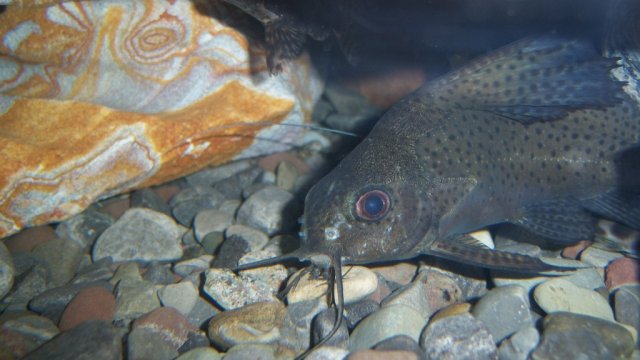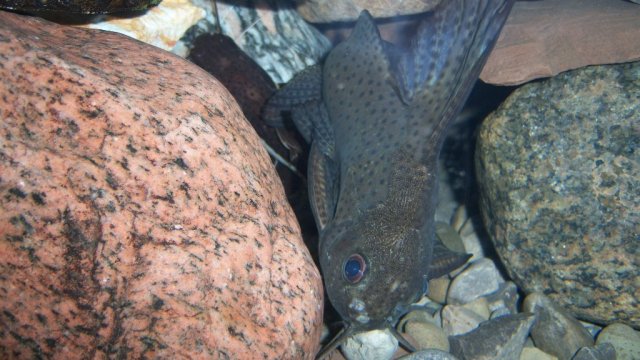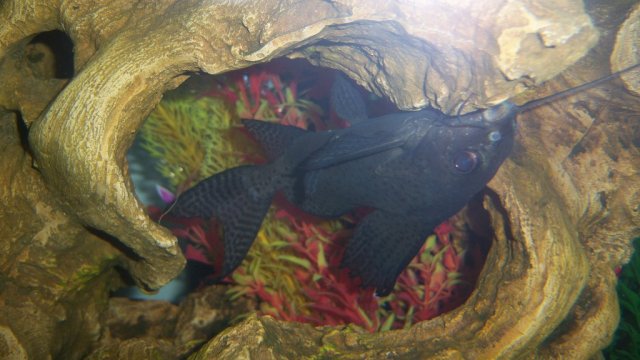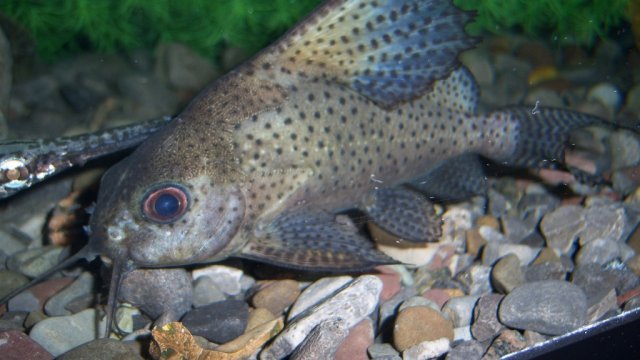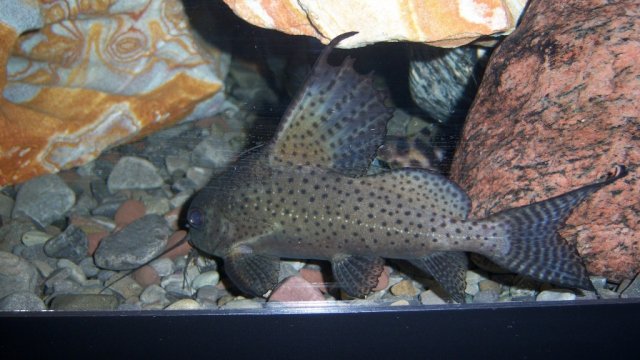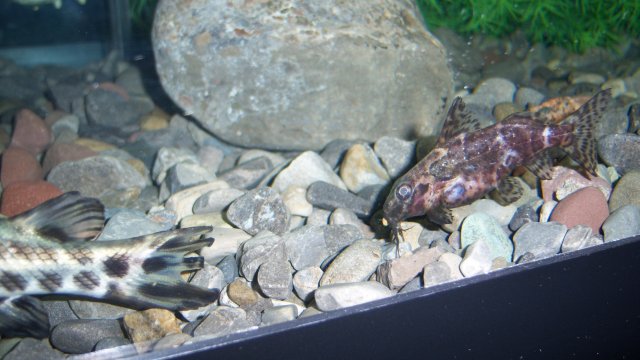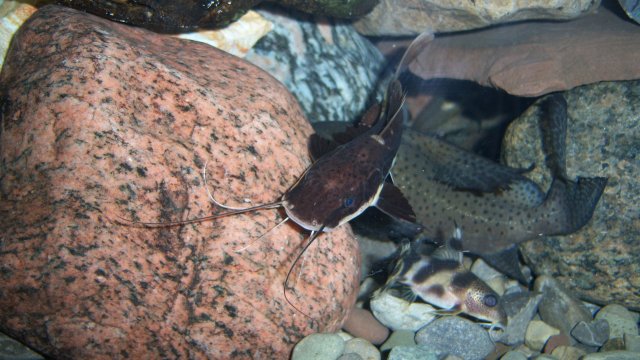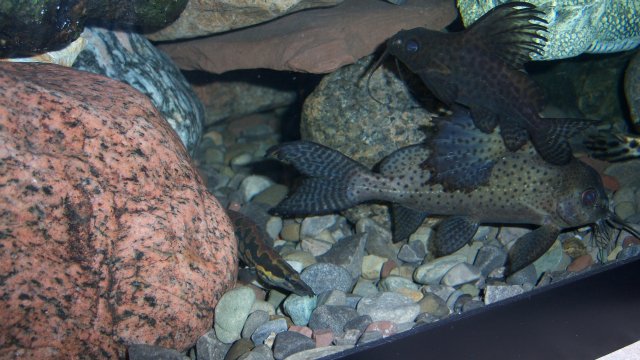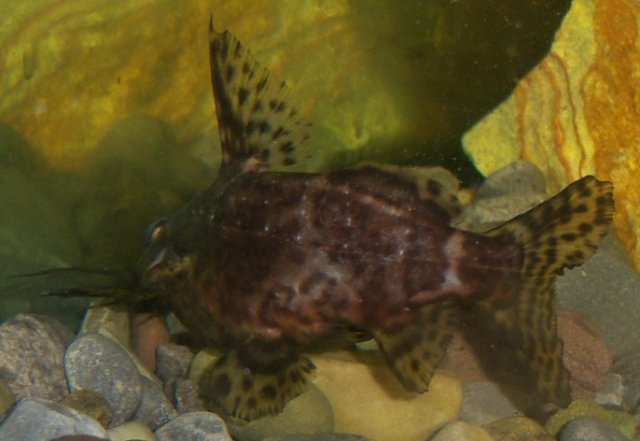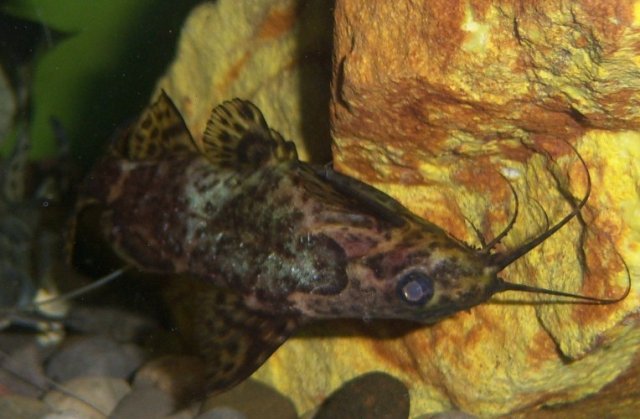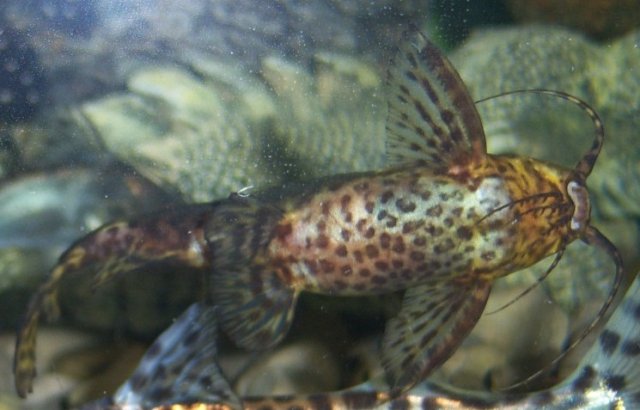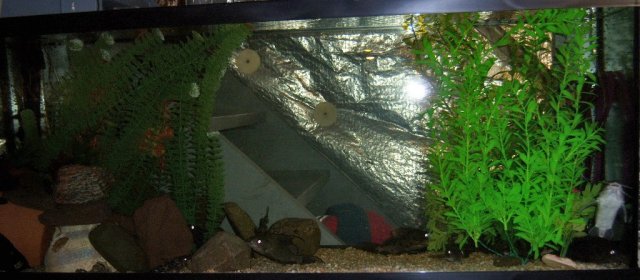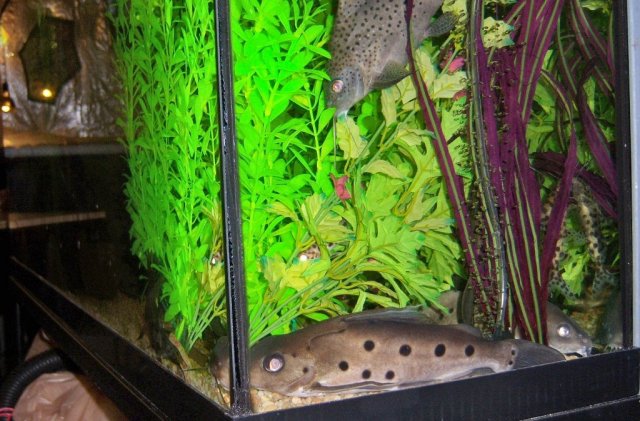From our snail bullhead thread:
https://www.monsterfishkeepers.com/...-or-snail-bullheads-ameiurus-brunneus.696696/ post #6
Update. A little criminal bedside story for boys and girls with stable psyche...
Once upon a time, there lived not three but two, not piglets, but snail bullheads not in the forest but in a dark scary fish tank full of critters of unfathomable kinds...
The snail bullheads had done well in the 1800 gal for some months and then I started noticing some damage on one of them, on the top, by the dorsal, first a little, no red, then with each week worse and worse until it became a sizeable, red, skinless crater. I spent some time by the tank hoping to catch the culprit but largely failed. I caught the Prochilodus lineatus tank mate (a relative of red-fin and yellow-fin Prochilodus) try to suck some slime off the target bullhead and hence took the lineatus out of the tank first, blaming the damage tentatively on it... but the future showed lineatus was but a sneaky fox, a vile profiteer, not the big bad wolf... the damage on the snail bullhead didn't heal and perhaps got a bit worse even after the lineatus was gone.
So it wasn't it. I took the bullhead out and placed it in a 240 gal where it healed up well and has been doing well since, even today. Then, of course, I started seeing the exact same damage develop on the second snail bullhead left in 1800 gal! Well. Mind you, this is but typical hair-pulling-out experience when housing a menagerie of fish together. Nothing surprising, at least in my career of "caring" for fish.
I watched closer as time permitted and finally caught the evil-doer - it was our oldest, about 15 years old, 12" hybrid synodontis! Swimming up to the bullhead and always looking for the same spot and rasping on it. The lubber bullhead behaved strangely to human logic not trying hard enough to swim away or to shake off the uninvited vampire. I feed the tank very well, so I cannot imagine the syno was doing it out of hunger, but rather just because it could. It wasn't about territory whatsoever either. Just a leisurely supplementation of diet, not out of need but probably out of "it gives me something to do, so why not?".
As I reported before, Ictaluridae, such as channels and bullheads, are terrible IME at warding off such attacks of certain fish, such as pacu, synodontis, Distichichodus, Labeo. Same goes for iridescent shark catfish, sporadically some Doradids, all rather timid fish.
So I had to take out the second bullhead out of the 1800 gal and transfer it to join the old buddy in the same 240 gal.
And in such a way the two Pigheads lost some skin but escaped the big bad Wolfodontis...
Obligatory after-story non-Vogue photoshoot. Parental discretion advised. (Remember the healthy stable psyche alluded to above.)
The first bullhead after transfer to 240 gal:
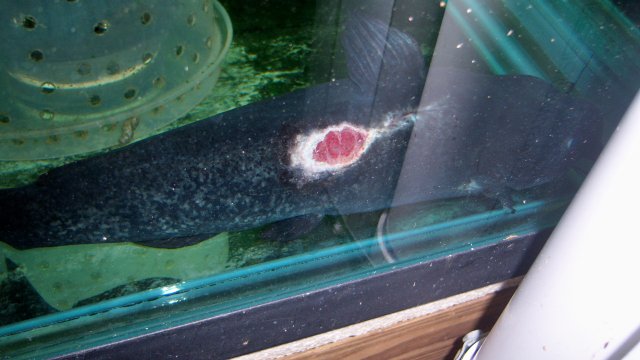
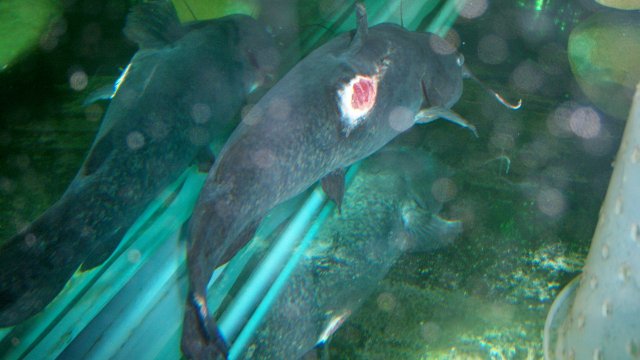
Second bullhead after transfer to 240 gal:
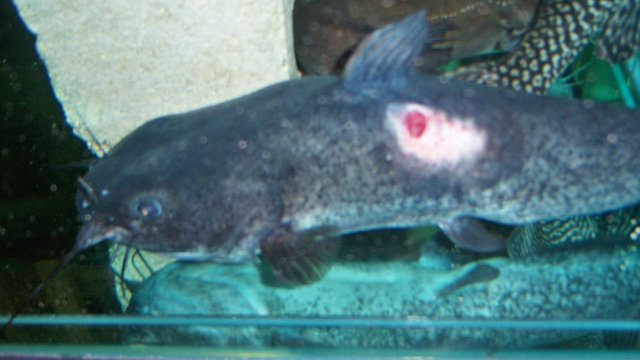
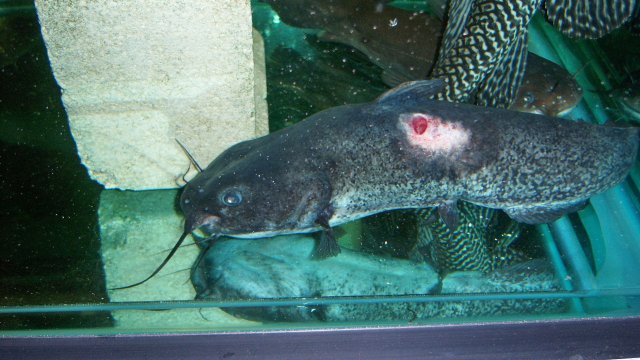
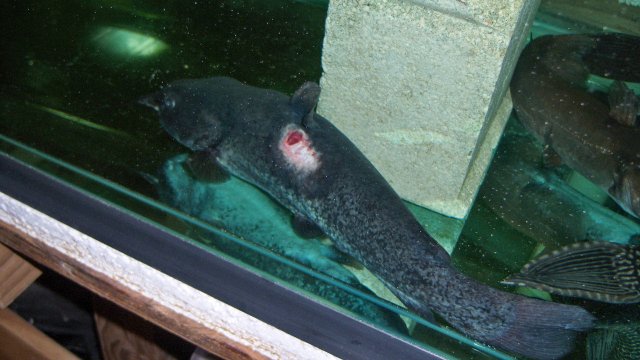
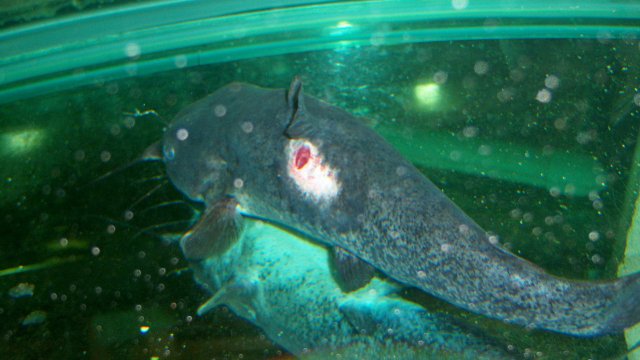
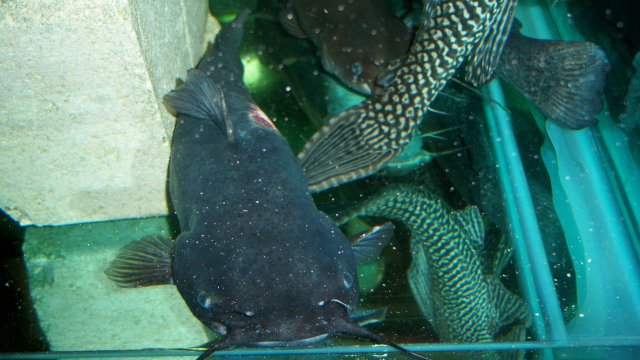
The rasper - hybrid synodontis named Krol through the years - first set of photos is from 2009-2010, 120 gal, Rochester, NY, then 2015-2017, 4500 gal, Naples, FL. Spots come and go. Same fish.
